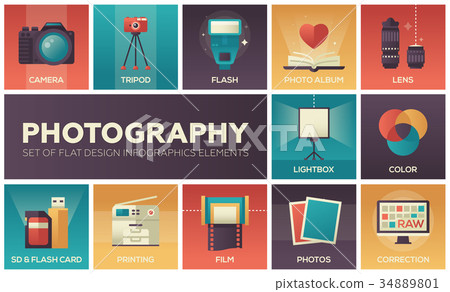What Every Digital Photographer Must Know About Lighting
What Every Digital Photographer Must Know About Lighting
Blog Article
Content Produce By-Futtrup Godwin
As a professional photographer, you know that lights can make or damage your images. Understanding the nuances of both natural and artificial light is vital for recording the mood and clearness you aim for in your work. Whether you're chasing the perfect golden hour glow or tweak your fabricated setups, grasping these elements can elevate your photography substantially. However there prevail challenges that Read the Full Post , and recognizing them can change your method to every shoot. Let's explore what you could be missing and exactly how it can affect your results.
Understanding Natural Light
Comprehending all-natural light is crucial for any type of professional photographer seeking to improve their job. It's the foundation of terrific digital photography, affecting state of mind, tone, and quality. When Writer headshots fire outdoors, focus on the moment of day. The gold hour-- shortly after sunrise and prior to sundown-- offers soft, cozy light that can transform average scenes right into stunning pictures.
Do not ignore the power of cloudy days. Cloud cover diffuses sunshine, developing a soft, even light that's perfect for portraits and macro photography. You'll discover colors appear this sort of illumination without severe darkness.
Positioning issues, as well. Constantly consider your topic's positioning to the light. If the sunlight's behind your topic, you might wind up with a shape, which can be remarkable but mightn't be what you want. Alternatively, straight sunshine can produce unflattering darkness.
Headshots for linkedin ; in some cases, altering your perspective can produce remarkable outcomes. Use natural reflectors, like water or sand, to bounce light onto your topic, including dimension.
Mastering Artificial Light
Understanding fabricated light is vital for photographers who wish to take their skills to the following degree. Whether you're making use of speedlights, workshop strobes, or continual lights, understanding just how to manipulate these sources can substantially boost your images.
Beginning by familiarizing on your own with the fundamentals of light top quality, direction, and shade temperature. Explore different modifiers like softboxes, umbrellas, or grids to regulate the softness or violence of the light.
You'll find that soft light often produces flattering outcomes, while harsher light can add drama and deepness. Do not shy away from shadows; they can enhance the three-dimensionality of your topics.
Pay close attention to the placement of your lights. A light positioned as well near your subject can produce uncomplimentary results, while too far can cause a lack of information. Utilize a light meter or your cam's pie chart to guarantee you're revealing properly.
Lastly, keep in mind that synthetic light can be combined with ambient light for innovative results. Balancing these sources may take method, but once you master it, your digital photography will absolutely beam.
Techniques for Different Situations
When you enter various shooting scenarios, adjusting your lighting techniques is vital for capturing the very best images. For exterior pictures, use the golden hour-- early morning or late afternoon light-- to soften darkness and enhance complexion.
If it's a harsh noontime sunlight, take into consideration making use of a reflector to bounce light back onto your subject or seek shaded locations for a more also exposure.
In low-light scenarios, like indoor occasions, enhance your ISO and use a large aperture to let in even more light. A tripod can aid remove electronic camera shake, permitting longer direct exposures without obscuring.
If you're shooting at night, explore off-camera flash to create vibrant lights and deepness in your photos.
For product photography, use diffused illumination to avoid severe representations. https://www.liveinternet.ru/users/yates_mouritzen/post509031592 or light tents can aid accomplish this effect.
When photographing landscapes, think about the instructions of light and time of day, as it can substantially alter the mood of your shot.
Constantly be ready to readjust your setups and placing based upon the circumstance, as versatility is key to understanding lighting in digital photography.
Final thought
Finally, understanding lights is crucial to raising your digital photography skills. Embrace all-natural light's beauty throughout gold hour, and do not avoid trying out man-made light strategies. By adapting your strategy to different scenarios, you'll catch magnificent images that resonate with emotion and clearness. Keep in mind, the ideal illumination can change a normal shot into something extraordinary, so keep practicing and fine-tuning your understanding of both natural and artificial light. Delighted shooting!
